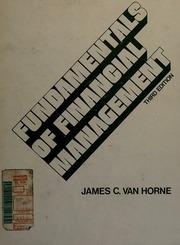Question
An equity carve-out differs from a spin-off for all but which one of the following reasons? Generates a cash infusion into the parent Is undertaken
An equity carve-out differs from a spin-off for all but which one of the following reasons?
- Generates a cash infusion into the parent
- Is undertaken when the unit has very little synergy with the parent
- The proceeds often are taxable to the parent
- Continues to be influenced by the parents management and board
- The carve-outs shareholders may differ from those of the parents shareholders
- Which one of the following is generally not a reason for issuing tracking stocks?
- To give investors a pure play in a specific business owned by the parent
- To create a currency for the business to acquire other firms
- To enhance the likelihood that the business will be acquired
- To create an incentive for management receiving the stock
- To raise capital for the parent or for the business for which the tracking stock is created
Debt restructuring of a bankrupt firm is usually accomplished in which of the following ways:
a. An extension
b. A composition
c. A debt for equity swap
d. Some combination of a, b, or c
e. All of the above
Why would creditors be willing to give a portion of what they are owed by the debtor firm for equity in the reorganized firm?
a. They are legally obligated to do so under U.S. bankruptcy law.
b. Ownership in a firm is inherently more valuable than being a creditor c. The value of the stock may in the long run far exceed the amount of debt the creditors were willing to forgive.
d. Creditors understand that they can sue the firm at a later date for what they are owed.
e. None of the above.
Step by Step Solution
There are 3 Steps involved in it
Step: 1

Get Instant Access to Expert-Tailored Solutions
See step-by-step solutions with expert insights and AI powered tools for academic success
Step: 2

Step: 3

Ace Your Homework with AI
Get the answers you need in no time with our AI-driven, step-by-step assistance
Get Started


